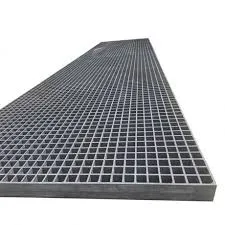frp sand pipe
Understanding FRP Sand Pipes A Modern Solution for Industrial Applications
Fiber Reinforced Polymer (FRP) sand pipes are a revolutionary advancement in the field of fluid transportation and industrial applications. With their unique properties and advantages, they are increasingly becoming the preferred choice over traditional materials like steel and concrete. This article delves into the characteristics, benefits, and applications of FRP sand pipes.
Characteristics of FRP Sand Pipes
FRP sand pipes are composed of a mixture of polymer resins and reinforcing fibers, primarily glass or carbon. These materials are engineered to provide high strength, lightweight, and excellent resistance to corrosion and abrasion. The manufacturing process often involves winding techniques that enhance the structural integrity of the pipes, allowing them to withstand harsh environments typically encountered in various industries.
The design of FRP sand pipes can be tailored to meet specific project requirements, including varying sizes, wall thicknesses, and dimensions, making them highly versatile. Additionally, they can be produced in either smooth or textured finishes, depending on the intended application.
Benefits of FRP Sand Pipes
One of the most significant benefits of FRP sand pipes is their corrosion resistance. Unlike metal pipes that are susceptible to rust and degradation when exposed to moisture and chemicals, FRP pipes maintain their structural integrity in aggressive environments. This characteristic extends the lifespan of the pipes, reducing maintenance costs and downtime for businesses.
Furthermore, the lightweight nature of FRP sand pipes simplifies installation processes. Traditional pipes often require heavy machinery and labor for handling and installation, but FRP pipes can be easily maneuvered and installed, minimizing labor costs and project timelines.
frp sand pipe

Another advantage is their impressive durability. FRP sand pipes can endure extreme temperatures and pressures, making them suitable for a wide range of applications, from oil and gas transport to wastewater treatment systems. The ability to withstand physical stress without compromising performance positions FRP pipes as a reliable option for critical infrastructure projects.
Applications of FRP Sand Pipes
FRP sand pipes are utilized across various sectors. In the oil and gas industry, they are employed for the transportation of crude oil, natural gas, and other essential materials. Their ability to resist fatigue and corrosion makes them ideal for offshore and onshore applications.
In civil engineering, FRP sand pipes are increasingly used for stormwater management and drainage systems. Their lightweight property and resistance to clogging improve the efficiency of water management solutions. Moreover, they play a pivotal role in infrastructure projects, where reliable stormwater drainage is critical for preventing flooding and erosion.
The mining industry also benefits from FRP pipes, particularly for transporting slurry and other materials that may be abrasive or corrosive. The longevity and reduced maintenance associated with FRP sand pipes translate into lower operational costs for mining operations.
Conclusion
FRP sand pipes are redefining the standards of pipe materials across various industries. Their advantageous properties—corrosion resistance, lightweight, durability, and customizability—make them an unparalleled choice for modern fluid transportation and management solutions. As industries continue to seek innovative ways to improve efficiency and reduce costs, FRP sand pipes will undoubtedly play a crucial role in future infrastructure developments.
Latest news
-
Oblate Tanks: Space-Saving, Durable Liquid Storage SolutionsNewsAug.27,2025
-
High-Performance Piping System Solutions for Industry & Commercial UseNewsAug.26,2025
-
Precision Fittings: Durable & Reliable Industrial & Plumbing SolutionsNewsAug.25,2025
-
Practical Steps: Unlock Success with Our Proven GuidesNewsAug.24,2025
-
Transport Tanks: Safe, Durable & Efficient Liquid HaulingNewsAug.23,2025
-
High-Quality Piping Systems for Efficient Flow & DurabilityNewsAug.22,2025











